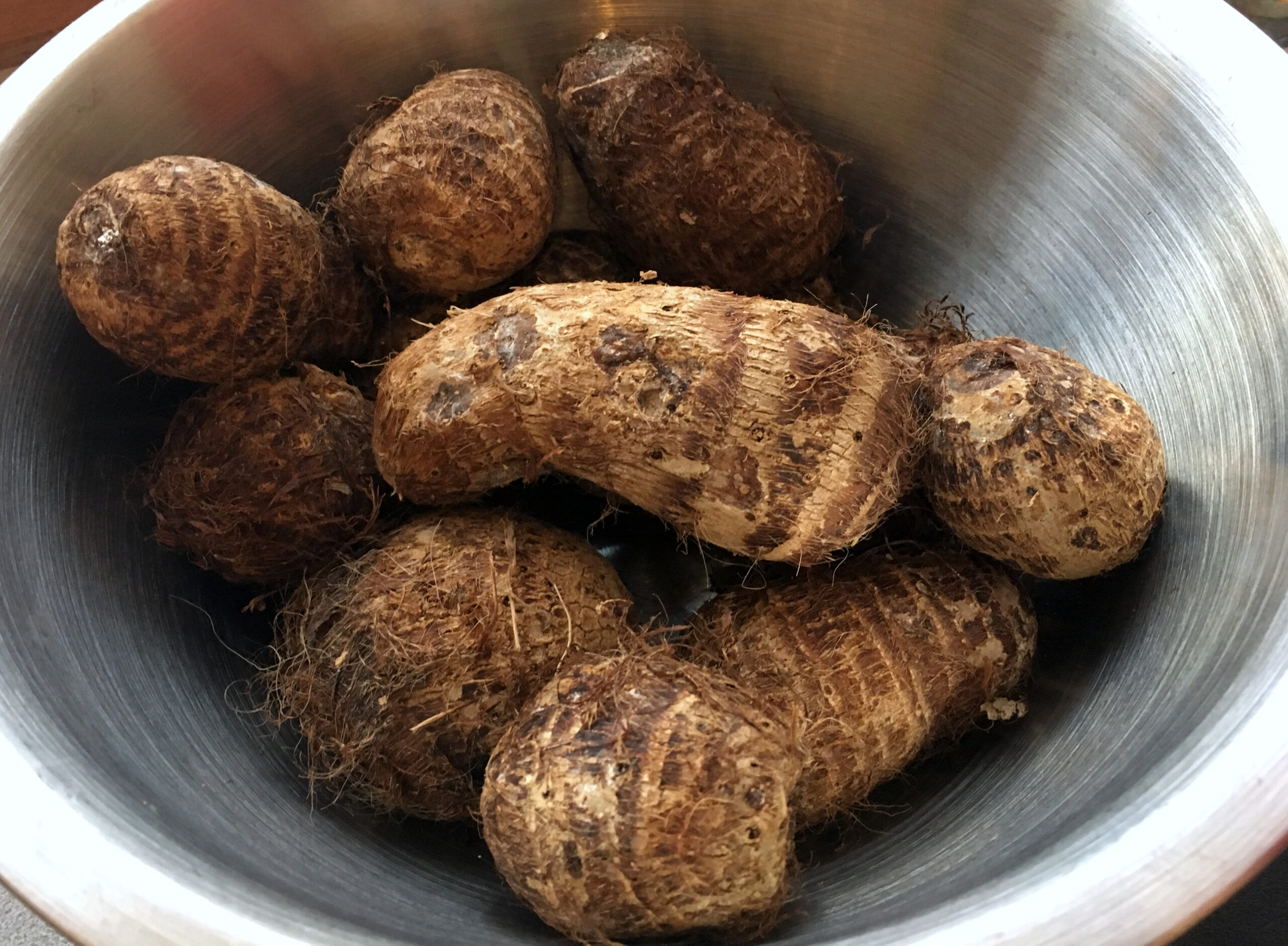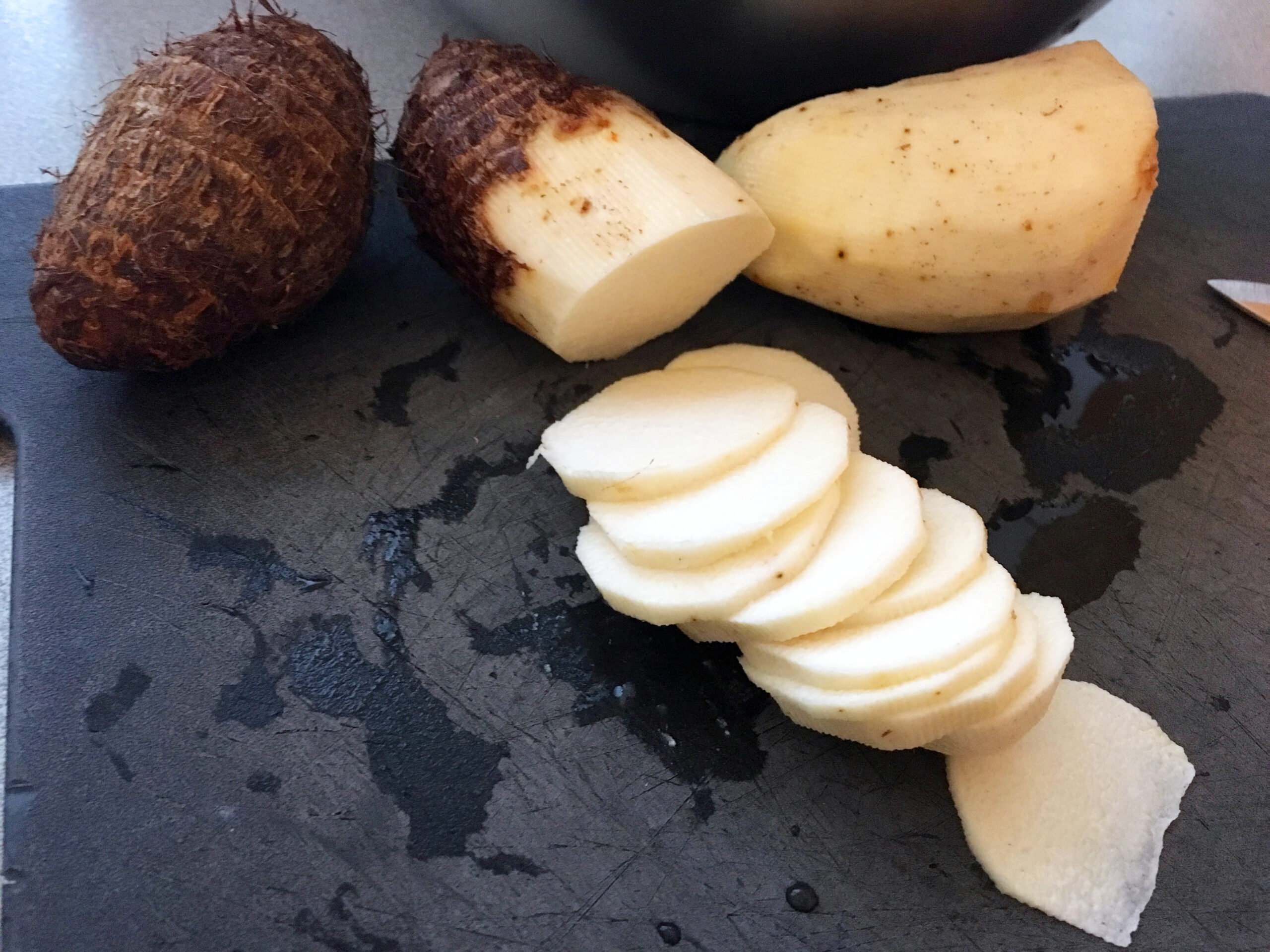The origins of this plant (Colocasia esculenta/antiquorum) lie in East Asia, presumably the Indochinese Peninsula, and it is thought to be one of the oldest domesticated food plants. In the Middle East, the taro first made its appearance in Mesopotamia, sometime before or around the 10th century, and later became associated with Egypt. Its early history in Antiquity is shrouded in mystery, not least because the colocasia of the ancient Greeks initially denoted the Indian lotus (Nelumbo nucifera), and only came to refer to the taro around the fourth century. Prior to this, taro was known as aron, which gave the Latin arum. Similar to a small hairy potato in appearance, it has a very starchy flavour. After the potato was introduced, the taro gradually fell out of favour in many places.
Only the root of the plant was eaten, almost always cooked, or fried, as in mediaeval Arab cooking. Use of the taro appears to have increased after the thirteenth century as there is only one recipe requiring it prior to that. It is also worth noting that taro is not found in the culinary treatises of the Islamic West, that is to say North Africa and al-Andalus (Muslim Spain). Ibn Sīnā (Avicenna) likened it to saltwort, and said that it was salty, astringent, diuretic, and purging. According to the 11th-century Baghdadi pharmacologist Ibn Jazla, taro stimulates sexual desire. The 14th-century Moroccan globetrotter Ibn Baṭṭūṭa would probably have disagreed since he partook of some taro in Mali, where it was the people’s favourite food, and was ill for two months. A companion of his was less lucky and died after eating it. Today taro is commonly used in the cuisines of Asia (where the purple variety is favoured), the Caribbean (where it is referred to as eddo) and, especially, the Pacific Islands (where it is also known as poi).


